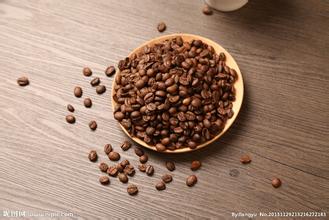Description of Import Price and Flavor of Laos Coffee Bean introduction to the Regional treatment method of Manor production
Description of Import Price and Flavor of Laos Coffee Bean introduction to the Regional treatment method of Manor production
In 1727, the first plantation in South America, Pala, Brazil, was established. And then cultivated near Rio de Janeiro.
The legendary Jamaican Blue Mountain Coffee began to grow in the Blue Mountains after coffee was introduced to Jamaica by the British in 1730.
From 1750 to 1760, coffee was grown in Guatemala.
In 1779, coffee was introduced into Costa Rica from Cuba.
Coffee was first grown in Mexico in 1790.
In 1825, coffee seeds from Rio de Janeiro were brought to the Hawaiian islands and became the later famous Kona coffee.
In 1857, a French army logistics quartermaster named MOOSSY began to grow coffee in the Pang Mei Shu region in central Vietnam, which started the Vietnamese coffee industry.
In 1878, the British led to the rise of coffee in Africa and set up a coffee plantation in Kenya.
In 1884, coffee was first planted in Taiwan.
In 1896, coffee began to land in Queensland, Australia.
In 1892, French missionary Father Tian successfully planted coffee in Zhukula Township, Binchuan County, Yunnan Province. In order to drink his own coffee, he used coffee fruit to breed the first coffee tree outside the church, and then cultivated more coffee trees and planted them around the church. Up to now, there are still 24 coffee trees which are more than 90 years old in Zhukula Township.
The production of coffee in Laos is already small, and Arabica sells almost all its own coffee to France, a relationship that has not changed since colonial times. Obviously, after the French left, the Laotians didn't know how to sell coffee. Robusta coffee is exported, sold to Thailand, went to Nestle, maybe this is why Thai Nestle coffee tastes so good. Basong does not have many large plantations, most small farmers produce, although there is the best coffee, but the tourism industry is still in its infancy, if you are a coffee enthusiast, you can also visit the local village. November to January is the harvest time for Arabica coffee, while February to March is Robsta's. If it's not that crazy, go to Vientiane or Luang Prabang cafes and carefully choose first-class local coffee. Remember to choose Arabica coffee varieties. Laotians also like to pour coffee into a glass mixed with condensed milk, and then have another cup of green tea.

Important Notice :
前街咖啡 FrontStreet Coffee has moved to new addredd:
FrontStreet Coffee Address: 315,Donghua East Road,GuangZhou
Tel:020 38364473
- Prev

Description of characteristics and Flavor of Sun Lion King Coffee beans introduction of Grinding degree in Manor area
Description of the characteristics and flavor of sun-dried Lion King Coffee beans Coffee is the most important export cash crop and the main source of foreign exchange income in Ethiopia. Ethiopia's coffee exports account for about 3% of the world market, making it the eighth largest coffee exporter in the world. Coffee exports increased steadily from 58000 tons in 1990 to 1995-1996.
- Next

Is it better to adjust the scale of the coffee grinder 2 or 3?
Coffee grinder scale adjustment 2 rough or 3 thick scale is just a reference. Different brands have different grinding scales, and the performance of the same type of bean grinder of the same brand under the same scale is not exactly the same. It is better to understand it this way: the scale only tells you which direction is thick and which direction is fine. When you find a suitable powder thickness, the role of the scale will show slightly.
Related
- Guji coffee producing area of Guji, Ethiopia: Humbela, Shakiso, Wulaga
- What is the most expensive variety of Qiloso in BOP multi-variety group?
- How to store the coffee beans bought home?
- Why are Yemeni coffee beans so rare now?
- Ethiopian Sidamo all Red Fruit Sun Sun Santa Vini Coffee beans
- SOE is mostly sour? What does it mean? Is it a single bean? what's the difference between it and Italian blending?
- Is Italian coffee beans suitable for making hand-brewed coffee?
- How to choose coffee beans when making cold coffee? What kind of coffee beans are suitable for making cold coffee?
- Just entered the pit to make coffee, what kind of coffee beans should be chosen?
- Can only Japan buy real Blue Mountain Coffee? What are authentic Jamaican Blue Mountain coffee beans?

